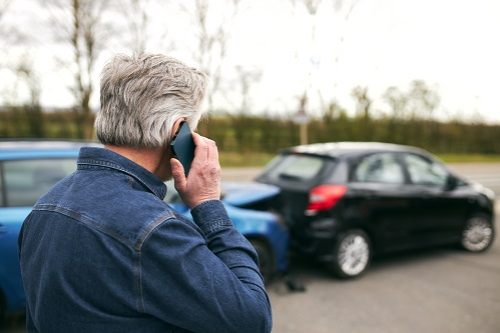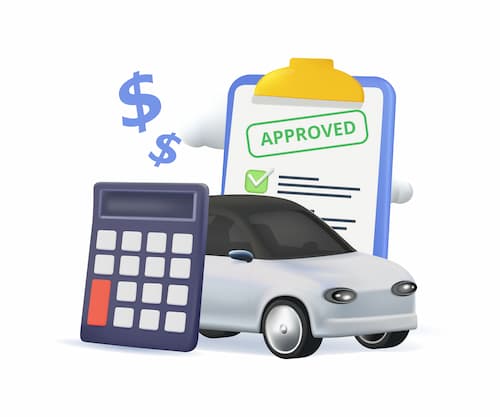Worst part about driving in winter
Winter driving makes you think immediately of snowy conditions. However, we found people hate ice even more.
Top five worst things about driving in winter:
- Driving on ice -- 37%
- Anxiety over driving in snowy, icy conditions -- 13%
- Driving in snow -- 9%
- Poor visibility because of snow or sleet -- 8%
- Driving in the dark more often -- 8%
We found that midwestern drivers especially don’t like ice. Nearly half (48%) of midwestern drivers said driving on ice is the worst part about winter driving. Snow isn’t so much of a big deal to them, though (4%).
What’s the region that hates to drive in snow the most? The Northeast. Twenty-one percent of northeastern drivers cite snow as the thing they dislike the most when driving in the winter. Ice was still their number one concern (34%).
Female drivers are also more worried about driving on ice than men.
What’s the worst part about driving in the winter?
| Scenario | Female | Male |
|---|---|---|
| Driving on ice | 40% | 34% |
Anxiety over driving in snowy, icy conditions | 18% | 9% |
| Driving in snow | 8% | 10% |
How much snow is too much to drive?
Depending on where you live, following the winter weather forecast is a part of life between December and March.
A weather forecast can mean restricting travel, staying home from work and canceling plans. How much snow is too much to drive? We found that one-fifth of motorists won’t operate a vehicle if there are up to three inches of snow expected. Another 26% won’t drive if there are four to six inches of white stuff forecast.
A hardy 20% said they drive even if there are more than 10 inches of snow expected. Not surprisingly, drivers in the midwest (32%) and northeast (26%) are more apt to drive in more than 10 inches of snow than people in other regions.
When dividing the results by gender, we found men are more apt to drive in snow than women. One-quarter of women said they won’t drive if there’s up to 3 inches of snow -- compared to 16% of men. Men are also more apt to drive in 10 inches of snow (25% compared to 16%).
Driving safely in winter
One way that drivers respond to winter conditions is to change their driving habits. Seventy-three percent said they alter the way they drive in winter. Midwestern drivers (83%) are most likely to change their driving.
Here are the three most common ways drivers change the way they drive in winter:
- Drive slower -- 84%
- Only take major roads/routes -- 40%
- Don’t drive unless it’s clear -- 23%
Taking those precautions seems to be helping. Only 8% of those surveyed said they've gotten into an accident in the winter over the past five years. That includes a mere 2% of southern drivers.
The most common types of accidents were:
- Swerved or lost control of the car on ice or snow and hit an object (guardrail, tree, fence, etc.) -- 34%
- Swerved or lost control of the car on ice or snow and hit another car -- 32%
- Was hit by someone who lost control of their car due to ice, snow -- 24%
Safety enhancements once only meant seat belts and airbags. Now, even economy cars are built with features like collision avoidance.
We found many respondents said those additions are also making for safer winter driving. Sixty-seven percent said safety enhancements, such as lane detection and backup cameras, have helped with winter driving safety. They’re not as positive about how driving apps and GPS are helping drivers. Nearly half (48%) said those enhancements are improving driver safety in winter.
Beyond driving safely, we found a small percentage of people change their vehicle for winter. Only 6% said they use a different vehicle, including just 3% of women. Instead, we found many more people change their tires (20%). This is most common in the northeast (30%) and west (29%).
Why tires are more important than all-wheel drive
What tire tread depth is best for winter? Most people don’t know. Fifty-nine percent admitted they had no idea. We found just 14% answered right that 6/32 or higher is best for winter driving tires.
Most states require tires only to have at least 2/32 inch of tread depth. This is fine on dry roads, but not for roads covered with ice, snow or lots of water. In snow, any tread below 6/32 inch is considered inadequate. A new all-season tire has at least 10/32 inch of tread. But even it won't grip like a winter tire.
Experts say having tires with the optimal amount of tread traction, meaning they aren’t “bald” or worn down, is a critical part of safe driving in winter weather, even more important than having all-wheel or four-wheel drive.
“You can take a car with an awesome four-wheel-drive system and put a tire that's a high performance summer tire and you could render it almost useless in the snow because the tires have got no grip," says Matt Mullins, chief instructor at the BMW Performance Driving School in South Carolina. "On the other hand, you could take your regular old car and put an awesome set of snow tires on and you'd be amazed where you could go."
"I think up North people know this," he says.
Here’s how survey participants responded when asked why motorists in warm regions have difficulty driving in snow:
Scenario | Percentage % |
|---|---|
They have little experience driving in winter conditions | 76% |
They are drivers who lack common sense | 15% |
They don’t have snow tires | 4% |
They don’t have all wheel drive | 4% |
Winter driving and auto insurance
Snow and ice don’t have a direct impact on your car insurance. Insurers don’t necessarily charge you more for auto coverage if you live in a place with more snow. That said, more hazardous conditions mean more vehicle accidents. More accidents in an area can lead to higher auto rates for everyone in that locale, or even state, since ZIP codes are taken into account by car insurance providers.
Collision car insurance is what helps you fix damages to your car from a weather-related crash, regardless of fault. That damage could have been from another vehicle or even a pothole. Your policy’s liability coverage pays for damage to other vehicles. And likewise, if someone hits you, you can make a claimAn insurance claim is a request you make to your insurance company for coverage after your car is damaged or you have an accident. You can file a claim online, by phone, or in writing. against his or her liability coverages. Comprehensive coverageComprehensive coverage helps pay for damage to your car caused by events other than a collision, such as theft, fire, vandalism, or natural disasters. It is subject to a deductible. reimburses for damage to your car if it’s damaged by hail, falling icicles and ice and snowy tree branches.
The cost of this coverage depends on factors, such as your vehicle, your driving record and your location. “Your driving – meaning driving record and claims history -- affects your future car insurance rates so be cautious and a defensive driver when driving in winter weather.” notes Penny Gusner, senior consumer analyst for Insurance.com.
If you do cause an accident during winter driving, and the other driver files a liability property damage claim for over $2,000, your rate may increase by an average of 32%. That’s about $450 more a year, based on an expert analysis of rate data by Insurance.com. But don’t fret: you can still save by comparison shopping.
“Keep in mind some insurers may not hike your rate at all, if you’ve maintained a clean driving record for many years prior to an accident. But also be aware that most will, and the amount of the increase can vary significantly among carriers,” says Gusner. “That’s because each company assesses risk differently. So, even with a recent accident, you can likely save on your insurance costs by comparison shopping.”
When driving in the winter, it’s best to use common sense. First, don’t get on the road if there are hazardous conditions.
The Insurance Information Institute offers these tips for winter driving when you’re on the road:
- Drive slowly
- Leave more distance than usual between the vehicle in front of you
- Drive carefully on bridges
- Know your route
- Beware of animals, such as deer
- Don’t use cruise control when the roads are slippery
Find the full list of tips on III.
Winter driving statistics
In the table below, you'll see how weather-related accidents, injuries and fatalities compare, according to the Department of Transportation Federal Highway Administration.
| Road Weather Conditions | 10 Year Average (2007 - 2016) | 10-year Percentages | 10-year Percentages for weather related crash |
|---|---|---|---|
| Wet Pavement | 860,286 crashes | 15% of vehicle crashes | 70% of weather-related crashes |
| 324,394 persons injured | 15% of crash injuries | 78% of weather-related injuries | |
| 4,050 persons killed | 12% of crash fatalities | 76% of weather-related fatalities | |
| Rain | 556,151 crashes | 10% of vehicle crashes | 46% of weather-related crashes |
| 212,647 persons injured | 10% of crash injuries | 51% of weather-related injuries | |
| 2,473 persons killed | 8% of crash fatalities | 46% of weather-related fatalities | |
| Snow/Sleet | 219,942 crashes | 4% of vehicle crashes | 18% of weather-related crashes |
| 54,839 persons injured | 3% of crash injuries | 14% of weather-related injuries | |
| 688 persons killed | 2% of crash fatalities | 13% of weather-related fatalities | |
| Icy Pavement | 156,164 crashes | 3% of vehicle crashes | 13% of weather-related crashes |
| 41,860 persons injured | 2% of crash injuries | 11% of weather-related injuries | |
| 521 persons killed | 2% of crash fatalities | 10% of weather-related fatalities | |
| Snow/Slushy Pavement | 186,076 crashes | 4% of vehicle crashes | 16% of weather-related crashes |
| 42,036 persons injured | 2% of crash injuries | 11% of weather-related injuries | |
| 496 persons killed | 2% of crash fatalities | 10% of weather-related fatalities | |
| Fog | 25,451 crashes | 1% of vehicle crashes | 3% of weather-related crashes |
| 8,902 persons injured | 1% of crash injuries | 3% of weather-related injuries | |
| 464 persons killed | 2% of crash fatalities | 9% of weather-related fatalities |
 Most of us have to drive in winter conditions, as nearly 70% of the population lives in snowy regions, and more than 70% of the nation's roads are located in snowy areas, according to the U.S. Department of Transportation Federal Highway Administration (FHA).
Most of us have to drive in winter conditions, as nearly 70% of the population lives in snowy regions, and more than 70% of the nation's roads are located in snowy areas, according to the U.S. Department of Transportation Federal Highway Administration (FHA).


